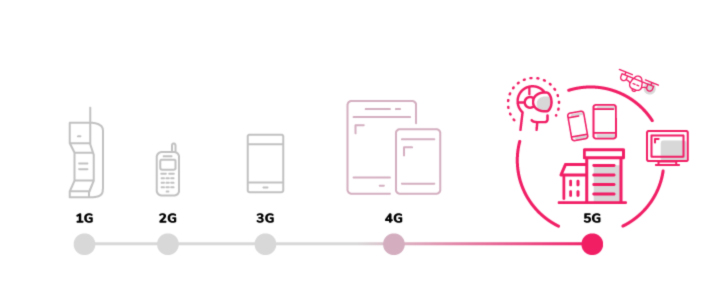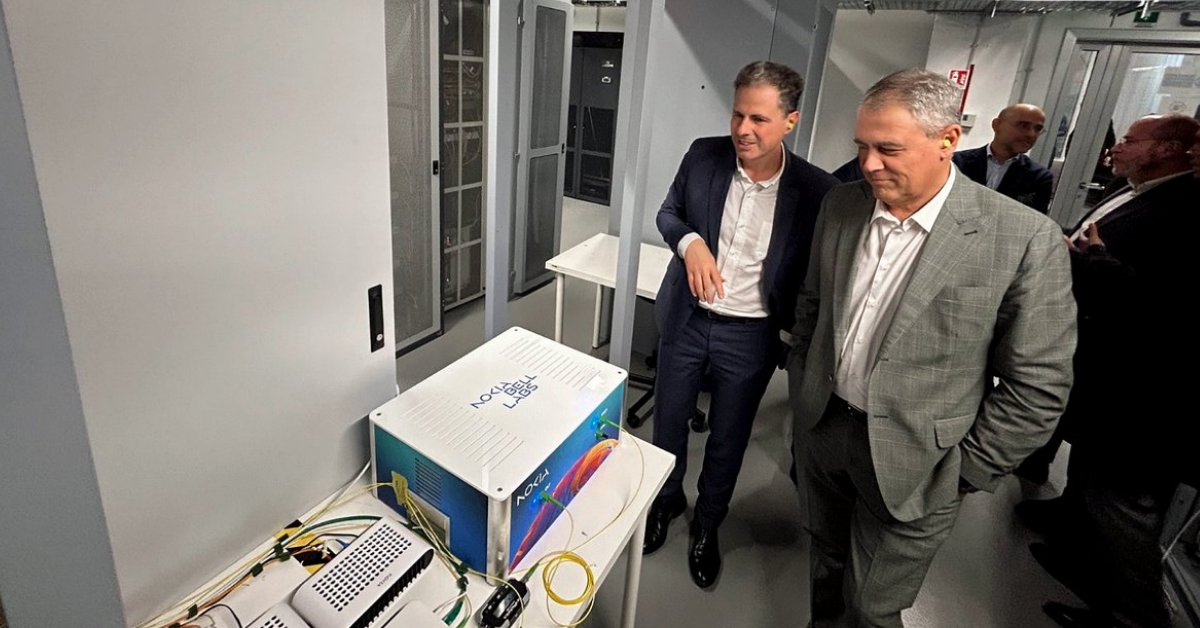Open Fiber – 5G: the fifth generation of mobile networks
5G is the fifth generation of cellular network technology. With its extremely fast data transmission rate, reduced energy consumption, vastly reduced latencyLatency This term indicates the time lapse between the stimulation of a system and the observation of the resulting effect. In telecommunications, by extension, it refers to the time it takes for a data packet to travel from the source computer to the destination computer. and unprecedented level of reliability, the 5G network will connect billions of people and devices in a completely new way.
Together with full-fiber networks, the fifth generation of mobile networks (5G) is establishing itself as the most advanced technology ever made available for data transmission.
5G will not only enable us to quickly browse the internetInternet The word comes from the fusion of the English terms international and net, i.e. international network. This term refers to the worldwide computer network that users all over the world can access via a computer to transmit and share data and information. from smartphones and tablets, it will also make it possible to create a network to which “everything” will be connected (Internet of Things).
Thanks to an extremely fast data transmission rate and a very low response time (latency), 5G will significantly improve the connections between billions of people and devices.
This revolution will be possible thanks to the widespread dissemination of 5G mobile sites (microcells) connected via a fiber-optic network, like the one Open Fiber is developing in Italy. The integration of the new 5G fiber-opticn etworks will have a major impact on the growth and development of various sectors which will finally be able to fully exploit the potential of the digital transformation, offering people and businesses a series of services that were until now unthinkable.
From smart homes with smart and connected domestic appliances to the automotive sector – the field that will provide the most eye-catching applications – and its “driverless cars”, without forgetting telemedicine with the interconnection of healthcare structures that will make it possible to remotely monitor patients, improving the efficacy and efficiency of the healthcare system.
In the field of public security, the joint use of TV cameras, smart wearables and drones will make it possible to transmit high-res images in real time in order to guarantee safe and reliable communications, with the possibility of managing emergency services.
In addition, there is augmented realityAugmented reality A form of virtual reality in which computer-generated information elements are superimposed on the real scene perceived by a viewer. Applications based on augmented reality require the use of special glasses or devices with a camera such as a smartphone, so that images of reality can be overlaid with pictures, captions, and diagrams. Examples include applications that draw the outline of constellations by framing the stars in the night sky, games that immerse characters in an everyday environment, furniture simulators to display furniture inside empty houses, etc. in tourism, the optimum management of consumption in the energy sphere with the aim of reducing waste and blackouts, and Industry 4.0Industry 4.0 This term refers to the fourth industrial revolution and envisions a production process based on the connection between physical and digital systems, complex analyses through Big Data and real-time adaptations. In other words: use of web-connected machines, analysis of information from the web and the possibility of more flexible management of the production cycle. Enabling technologies range from 3D printers to robots programmed for certain functions, via cloud-based data management and data analysis to detect production weaknesses and strengths. It is the IoT applied to industrial production. applications like the integration of robots in factories, the automation of production and the full digitalisation of company processes.
These are just some of the sectors that will be most affected by the potential integration of the new 5G fiber optic networks which will undoubtedly play a key role in driving the economy and innovation towards the GigabitGigabit The Gigabit is the unit of measurement that represents 1 billion bits and is abbreviated as Gbit or Gb. This unit of measurement is often used, together with the megabit and the kilobit, in relation to time (in seconds) for calculating the transmission speed of digital signals, mainly used to calculate the speed of a data download. The Gbit/s is currently a widely used unit of measurement to refer to data transmission speed in computer networks. Society in the near future.

Fiber optics and 5G
The capabilities of 5G technology require an interconnecting grid of high-performance mobile sites that enable this technological evolution; only an extensive fiber-optic infrastructure can satisfactorily meet this need, guaranteeing speed not in megabits but in gigabits per second.
Networks in copper or combinations of fiber optics and copper are not sufficient and would create a bottleneck for the 5G network.
Open Fiber therefore plays a pivotal role in the development of this ecosystem.
The spread of 5G may therefore be enabled by the Open Fiber fiber optics network which extends right across Italy – 271 cities in clusters A&B and over 6.200 municipalities in clusters C&D – and will therefore be the true enabler of 5G development in the country.
Fiber optics can exist without 5G, but 5G can’t exist without fiber optics.







